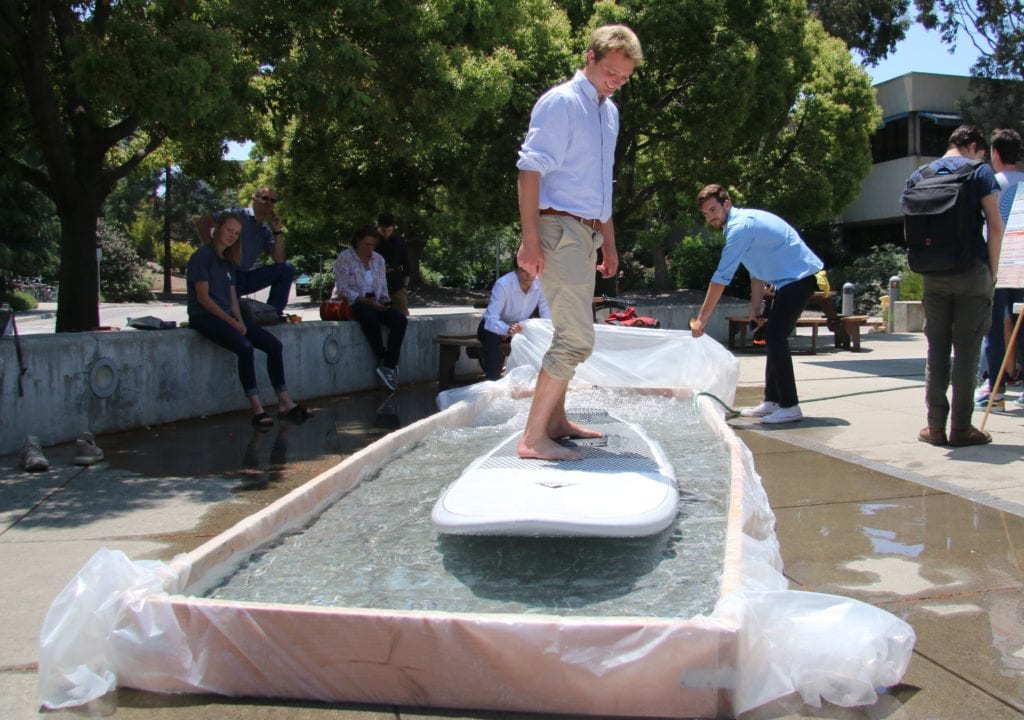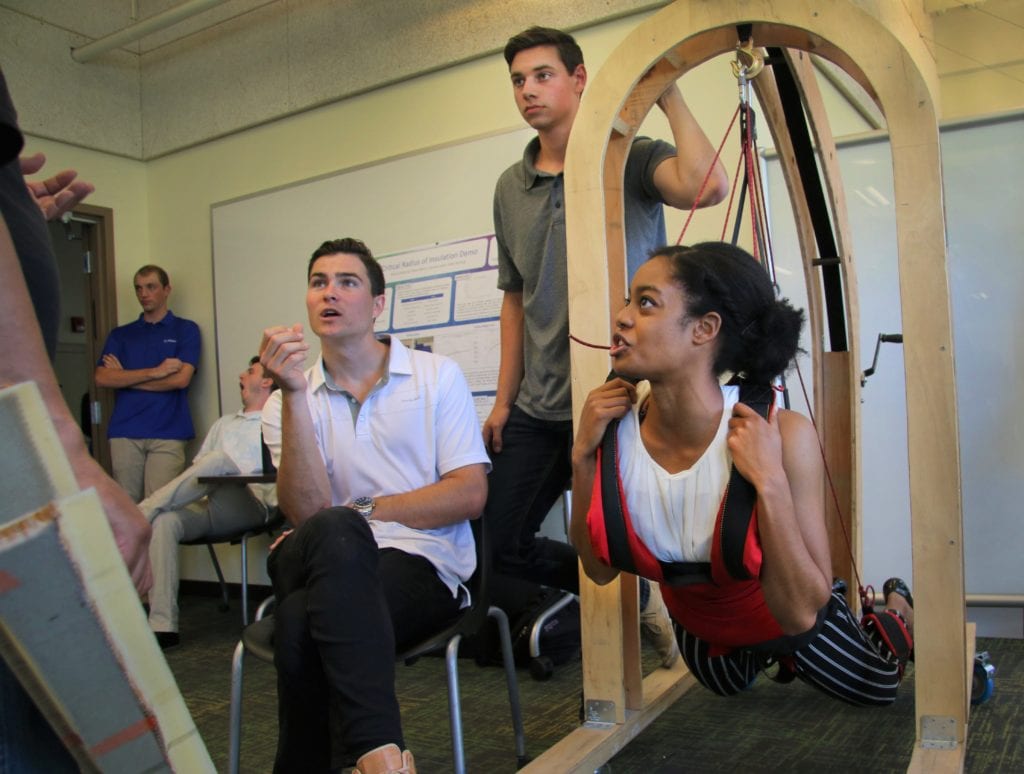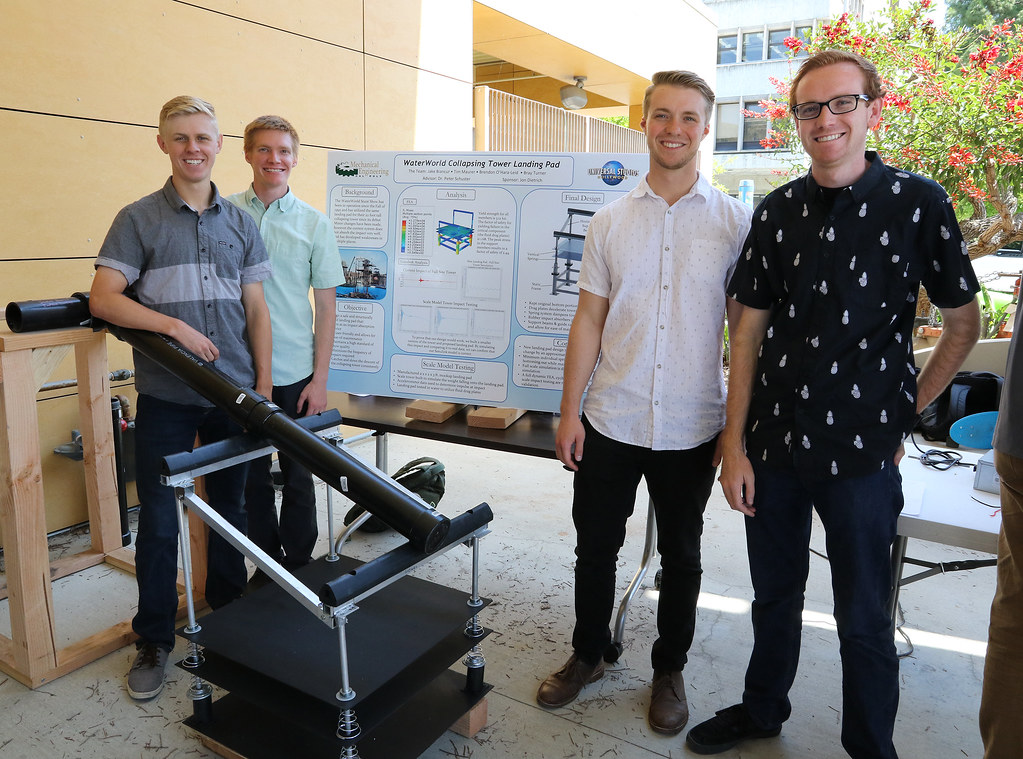Strapped in a harness, Nikole Boggs is suspended a few inches from the ground in a position more commonly associated with flying superheroes.
“I’ve been in here for, like, two and a half hours,” she says, gently swaying in the middle of a wooden frame. “It’s pretty comfortable.”
The mechanical engineering student has been working with her team on a device for a 7-year-old girl with cerebral palsy. The device, called a walk harness lifting frame, was one of several projects on display Friday at this year’s Engineering Project Expo. The annual expo highlights over 200 individual and team projects, many of which seek to benefit people with physical challenges.
During the expo, students interact with project sponsors, faculty and other students, sharing information about their process and the final result. The lifting frame, for example, pairs with a harness designed by biomedical engineering students. The disabled girl will be able to pull her wheelchair up to the frame while strapped into the harness. From there she will be able to hook her harness to frame cables that will lift her into an upright position.
“She has little control over her arms and legs, but she is able to move them,” Boggs said. “So, with a harness that the BMED team makes, she should be able to learn how to walk.”
The wood frame is a prototype, which will be replaced by one made of fiberglass and composites. And, hopefully, the team will see the girl try it out when they return in the fall.
“This is what we’ve been working for,” said Wyatt Salinas.
Multiple projects aimed at people with disabilities involved surfing. One team designed and created a prosthetic limb for amputee surfers, while another created a device that would allow wheelchair users to use a paddle board. Yet another team created a board with a motor, which will be presented to local non-profit AmpSurf.
That team, calling itself the Motorized Mavericks, designed a board that would help the AmpSurf instructors who teach individuals with disabilities how to surf.

“Usually, the instructor and the student or participant are on the board together,” explained Lauren Jensen.
But the weight of two people makes it difficult to paddle a board into oncoming waves. So their powered surfboard allows the instructors a remote-operated boost.
The Motorized Mavericks includes students from several majors, including mechanical, electrical and general engineering.
Jensen, a mechanical engineering student, said the individual team members worked on all aspects as opposed to dividing tasks based on area of expertise.
“It was fun to do everything together and learn from the different disciplines,” she said.
Not every project on display was designed for an individual with disabilities. Others included an electric wind farm, the hydraulics used for Cal Poly’s Rose Parade float and Marvin, the JPL Open Source Rover, designed by a team of electrical engineering students.
“We want to take this to local high schools and middle schools,” said Salvador Cortes Soancatl. “They can get motivated in the space industry and space in general.”
Their rover, named Marvin, is a nod to NASA’s Mars rover – and a nice visual example of how electrical engineers can equip a robot with solar power. With several recent space initiatives garnering the public’s fascination and more on the way, taking Marvin to schools is not only educational but also timely.
“There’s a lot of talk about NASA’s next 2020 rover mission,” Soancatl said. “So we want to get that hype started again.”



